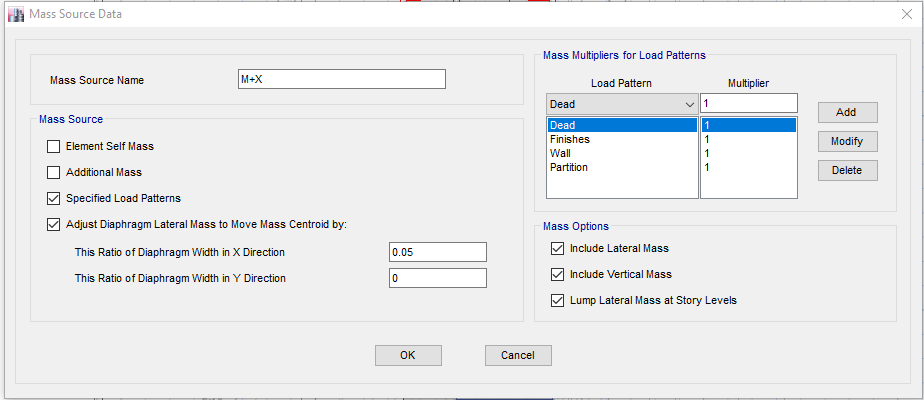Search the Community
Showing results for tags 'Accidental Torsion'.
-
In my etab model, I have defined two grid systems; first grid at 0 degree angle and second grid inclined at 45 degree angle. To consider eccentricity effects, I am displacing mass of the structure by 5% in x and y direction. But I am confused as to which grid system will etab displace the mass in?
-
I am involved in project where I urgently need to have good answers to following questions related to response spectrum analysis for my clear understanding and to assert to client that my approach is right. I am not designing shear walls under RSA load cases but only for static cases. Scale factor between static and dynamic is 3 in X and 2 in Y so the dynamic forces are lot lesser than the static ones. Also I am not amplifying torsion in RSA. And combining orthogonal effects with SRSS approach and not by combinations. 1. Do we need to amplify accidental torsion according to Table M of UBC-97 regardless of seismic zone? In ASCE you need to do it only for SDC C and above. 2. If RSA is done using ETABS (shifting of mass 5%, then determining acceleration at each node, then multiplying tributary mass to get torsional force), then do we still need to amplify RSA eccentricity by Ax (Amplified torsion)? In my understanding you need to only amplify static seismic cases. 3. According to FEMA, UBC-97 and Wilson, there are 2 methods of orthogonal effects. 100% X+30% Y or SRSS. That means I can define a scale factor in U1 and U2 both in the same spectrum load case and select SRSS, instead of defining U1 and U2 (2 separate cases) and then combining them in load combinations. FEMA and Wilson (2004) prefer to use SRSS (100%X and 100% Y to have same strength against earthquake in all directions). 4. Do I need to consider U3 in RSA for vertical direction equal to 2/3 of horizontal or i can ignore it? It is already considered equal to 0.5CaI (UBC-97) or 0.2Sds (ASCE) in static load cases by the way. 5. Do we design shear walls on RSA? Because would'nt it be too conservative (unrealistic) to design huge shear walls just for pure tension instead of tension-compression couple from lateral loads? Because results from RSA are abs (+ or -) but not both. If not then what is the role of RSA in seismic design other than to get the maximum response only to have an idea of total base shear and its distribution. 6. How do we say that dynamic effects are not governing rather static seismic forces are governing? By comparing values of base-shear at each story? Most of the times in regular low seismic zones, dynamic analysis does not govern. What is the meaning of "does not govern"? How do we practically specifically check that in ETABS? By comparing forces as I have said?
-
-
I am not getting this statement , that how to check torsional irregularity . Please Help . "Torsional irregularity shall be considered to exist when the maximum story drift, computed including accidental torsion, at one end of the structure transverse to an axis is more than 1.2 times the average of the story drifts of the two ends of the structure. "
-
Hello everyone!! I have tried to understood the every step of etabs analysis for simple two story irregular building by manual calculation. But i got stuck when the centre of rigdity and the amount of torsion does not match. How can we calculate these things manually? . As well as i want to know further about the distribution of this torsion to frame member. Thanks
- 2 replies
-
- Torsion
- Centre of Rigidity
-
(and 1 more)
Tagged with:
-
Some one asked me abt dynamic analysis and when we need to perform dynamic analysis and what about seismic irregularities and how to base our design on that. I couldnt reply but right now there is power shut down in my office (im enjoying it). So thought to share the reply on sepakistan.com so its openly available for everyone. I took snap shopts from my mobile. This document is the seismic symmary from SK gosh. Then there r some pages abt irregularities from my fav book abt tall structures. I think these pics speak more than i know. So have a look at them.
- 4 replies
-
- seismic design IBC
- horizontal irregularity
- (and 3 more)




